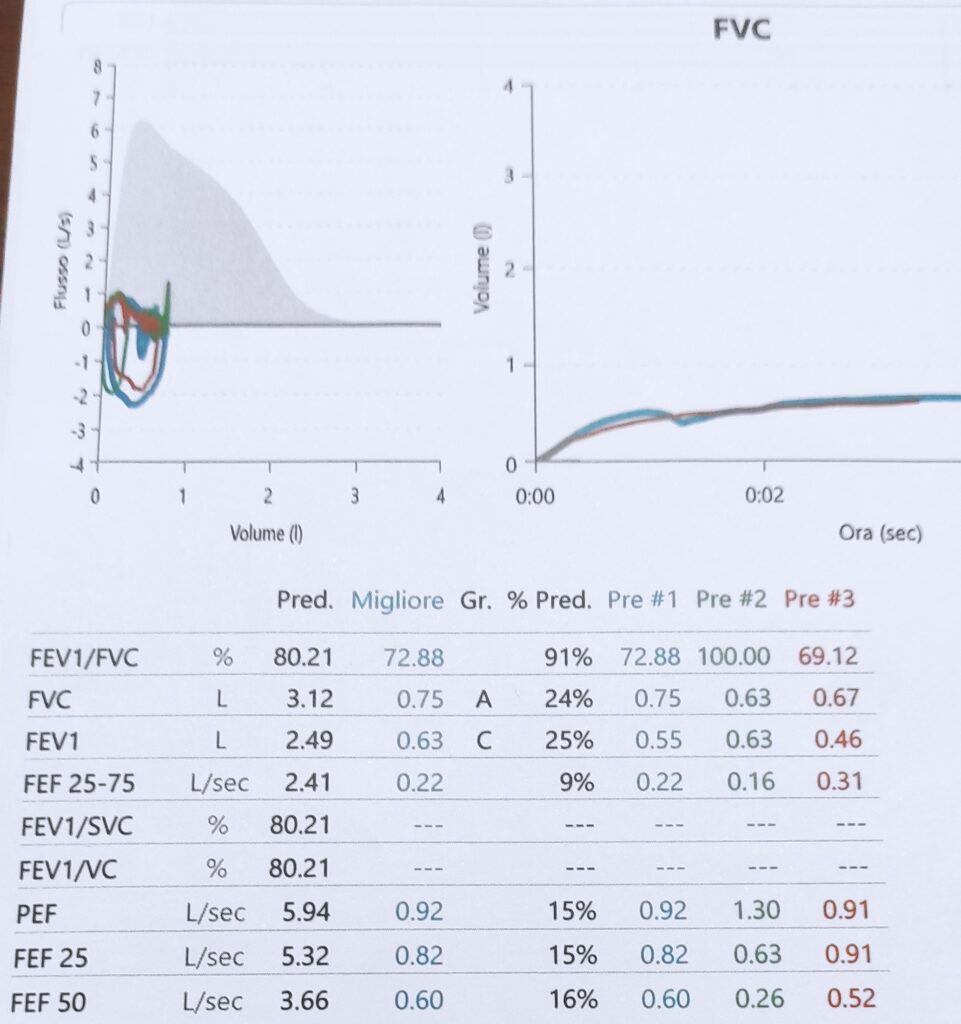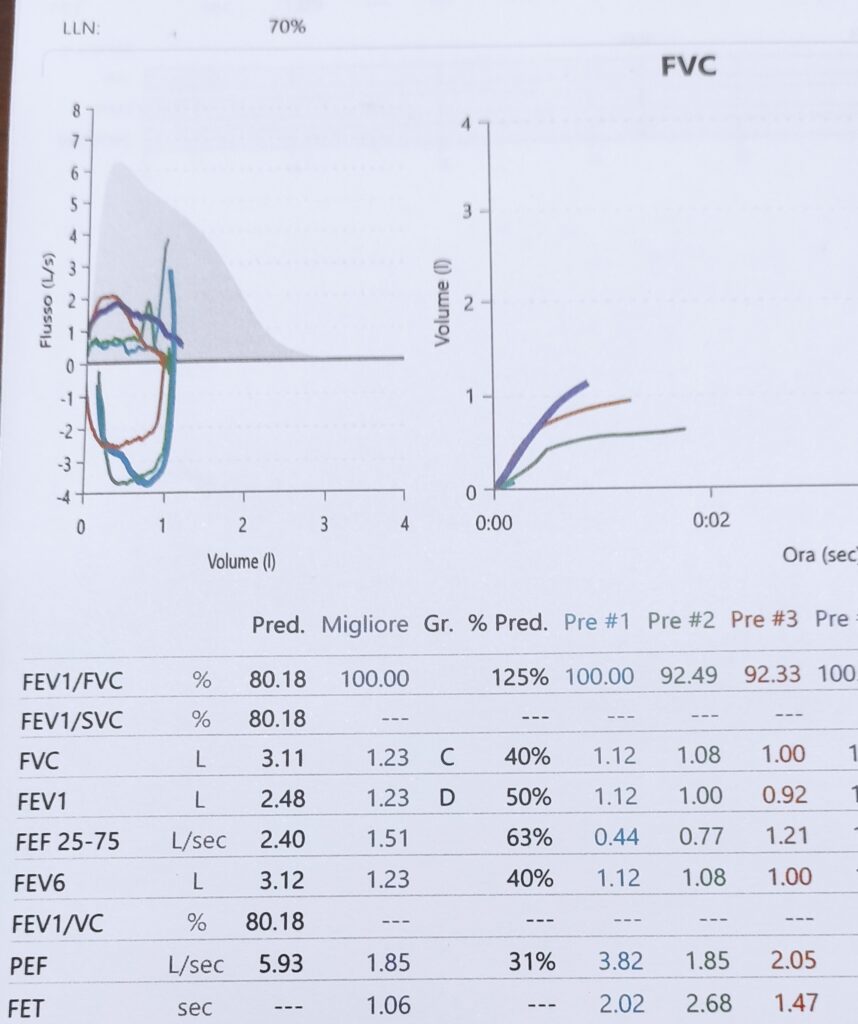21 Novembre 2022 ![]()
A case report on the role of Mepolizumab in real-life in patient with severe asthma and autoimmune disorder
Introduction
The role of mepolizumab in severe asthma has been proven for years now, indicating that Anti-IL-5 plays a key role in preventing flare-ups and improving spirometric functional parameters (1). The purpose of this case report is to demonstrate that the use of biological drugs in severe asthma associated with autoimmune diseases can be carried out and the improvements in clinical-functional and instrumental terms are very significant.
Clinical Case
A 55-year-old non-smoking, deaf-mute patient comes to my attention for reported episodes of dry cough and dyspnoea plus wheezing. Laboratory tests carried out in May 2022 showed the presence of 560 eosinophilic cells on the blood count, VES: 18, IgE normal, negative Prick test, ANA: 1:320, with punctuated cytoplasmic pattern (AC-21). Chest CT scan showing: ectasic appearance of diffuse bronchial branches with areas of ground-glass opacity at the right lower lobe and right upper lobe. In May 2022, i prescribed maximal therapy with ICS/LABA 2 x 2 + LAMA 2 inhalations daily in combination with Montelukast and anti-histamine, but reporting no benefit and worsening clinical and spirometric data: FEV1: 25% FVC: 24% FEV1/FVC: 91% PEF: 15% FEF25-75: 10% of the predicted value., for that, I recommended starting on therapy with the biological drug Mepolizumab. with a 4-month follow-up with a comparison chest CT scan. She returns and reporting clinical wellbeing, blood tests show the presence of 40 blood eosinophils, VES: 8 and on CT scan complete regression of the previously reported areas of opacity. However, oval lymph nodes were found in the axillary cavity of about 16 and 22 mm with a hypoechogenic profile and in the opinion of the radiologist colleagues worthy of biopsy. The patient also underwent these examinations 2 weeks after administration of the flu vaccine. He repeated spirometry on November 2022, which showed: FEV1:50% FVC: 40% FEV1/FVC: 125% PEF: 31% FEF 25-75: 63%. Therefore, I recommended continuing with biological in addition to the maximum therapy that the patient previous done


Conclusions
Mepolizumab has a fundamental role in the management of severe asthma, however it is necessary to study the patient well first from an immunological point of view for probable side effects from the drug that have not yet been ascertained, and to maximise inhalation therapy by performing close checks of lung function. Despite the fact that I had referred the patient for a rheumatological examination, the picture described was not investigated by the patient’s relatives.
1 Marco Umberto Scaramozzino, 2 Giovanni Sapone
1.MD Pulmonologist Director Ambulatory of Pulmonology “La madonnina” Reggio Calabria (RC), Italy Author, mail: scaramozzinomarco91@gmail.com
2.Head of Nursing Department of Cardiology Polyclinic M.d.c. Reggio Calabria (RC), Italy mail: giovanni.saponeg@gmail.com
3 Sheenam S. United Lincolnshire Hospitals NHS Trust, Lincolnshire Department General Medicine.







